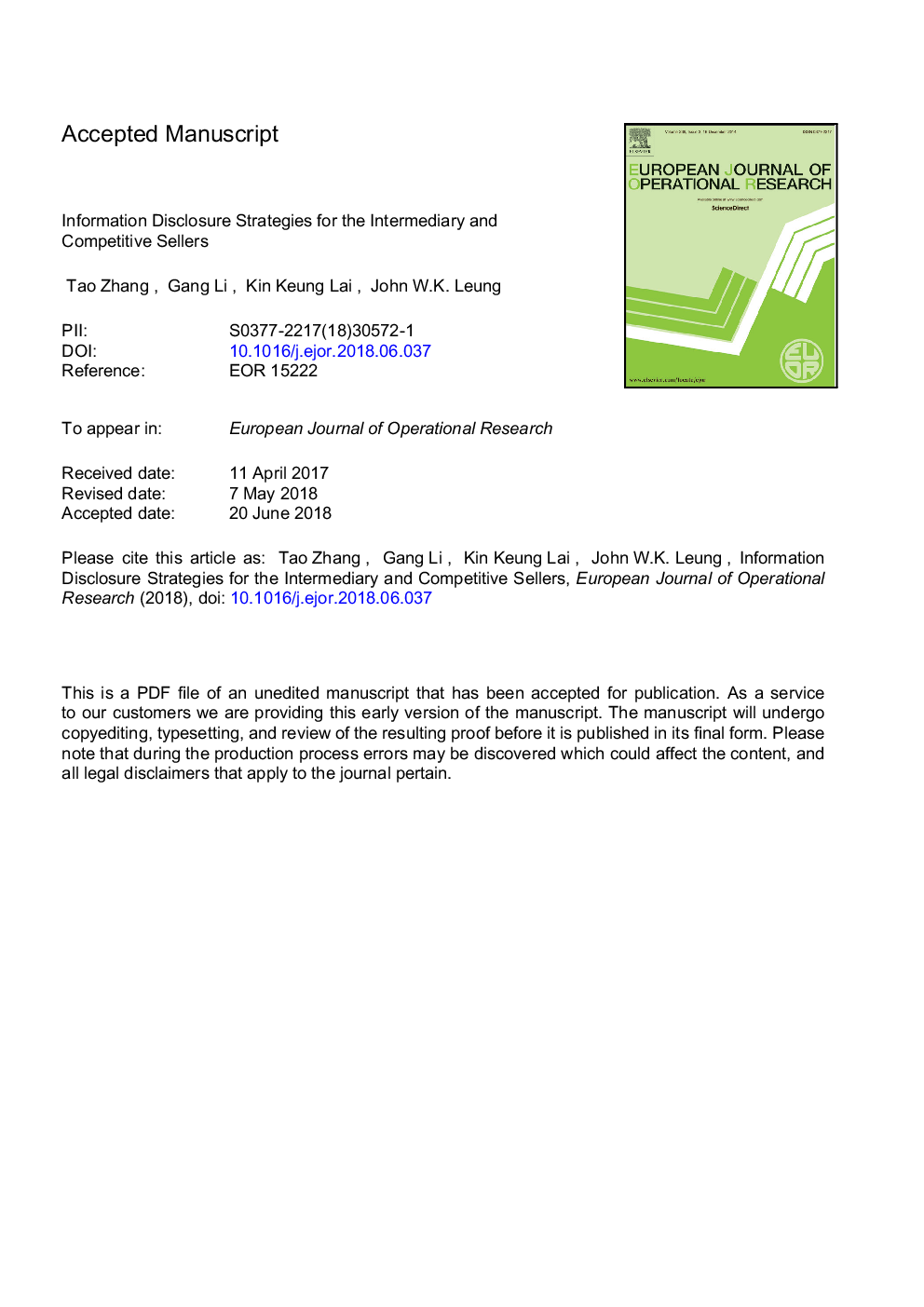| Article ID | Journal | Published Year | Pages | File Type |
|---|---|---|---|---|
| 6894439 | European Journal of Operational Research | 2018 | 54 Pages |
Abstract
Product information plays an important role in consumers' purchase decisions. In this paper, we develop an analytical model to investigate how the intermediary and sellers manage consumer uncertainty and returns/exchanges by disclosing product information. We find, given the information disclosure tools, the competitive sellers always choose to disclose as much information as possible. By analyzing the intermediary's decision on the development of information tools, our results suggest that the intermediary's optimal information strategy is determined by the disclosure cost and product characteristics (i.e., product value and return cost). The intermediary is likely to invest more to develop information tools if the cost coefficient is low or if the product has a relatively high return cost compared with its value. As a result, the information tools developed by the intermediary facilitate sellers' information disclosure at a high level. Moreover, considering particular product characteristics and information disclosure cost, we examine the role of revenue sharing fraction between the intermediary and sellers. Our findings suggest that a modified revenue sharing fraction can facilitate firms' Pareto improvement and lead to an information-rich platform.
Keywords
Related Topics
Physical Sciences and Engineering
Computer Science
Computer Science (General)
Authors
Zhang Tao, Li Gang, Lai Kin Keung, Leung John W.K.,
